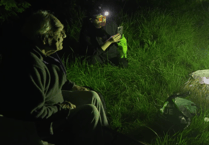BISHOP’S Meadow in Farnham has welcomed back a small group of cattle which can be seen grazing contentedly on the lush grass and buttercups in the top field.
Cattle have long been a feature of flood plain meadows and play an important role in creating more bio-diverse environments.
This particular field has seen a large increase in the variety of herbs, grasses and wildflower plants because of the cattle’s activity and they have the added benefit of keeping the grass down!
It is hoped the cattle will be on site for much of this year and signage has been put up asking dog owners to keep their pets on a lead when entering the enclosure and for casual walkers to be aware of them as they take a stroll.
Apart from the cattle there is much else to see for the observant visitor, including more than 40 species of birds, 16 species of butterflies and more rhan 200 species of plants.
There are regular sightings of buzzards, red kites, herons and kingfishers while barn owls have also been spotted over the meadows on an evening hunt for mice and voles.
Foxes regularly patrol the acreage and badgers have been seen too, although they appear to be less frequent visitors, perhaps preferring the shelter and darkness of more wooded areas.
In the ditches and streams are grass snakes, toads and frogs and there is also a healthy population of slow worms!
During the lockdown the meadows have seen a substantial increase in the number of visitors taking their daily permitted exercise, many using the land for the first time, and everyone appears to be abiding by the social-distancing rules as evidenced by the increased width of the paths!
Visitors may have seen a small group of volunteers planting out wild flower plugs in eight areas across the meadows and these will hopefully establish themselves and flourish over the coming months.
The varieties chosen are all British native plants and include some with fantastical names such as Goatsbeard, Birdsfoot Trefoil and Cransbill.
In all 17 varieties have been chosen, and more than 7,000 individual plants have been planted, so it has been a great effort by all involved under the guidance of Nick Green, the land manager.
The Bishop’s Meadow Trust owns and manages the majority of the land and relies on grants for its funding, which is essential to keep the meadows in good order.
Over the years the trust has won many accolades and awards for its environmental work and is already planning further activities with partners space2grow (www.space2grow.space).
To find out more about the meadows, and crucially how to become a member and support the trust’s important environmental work for as little as £10 a year, visit the website www.bishopsmeadowtrust.com or email [email protected]




